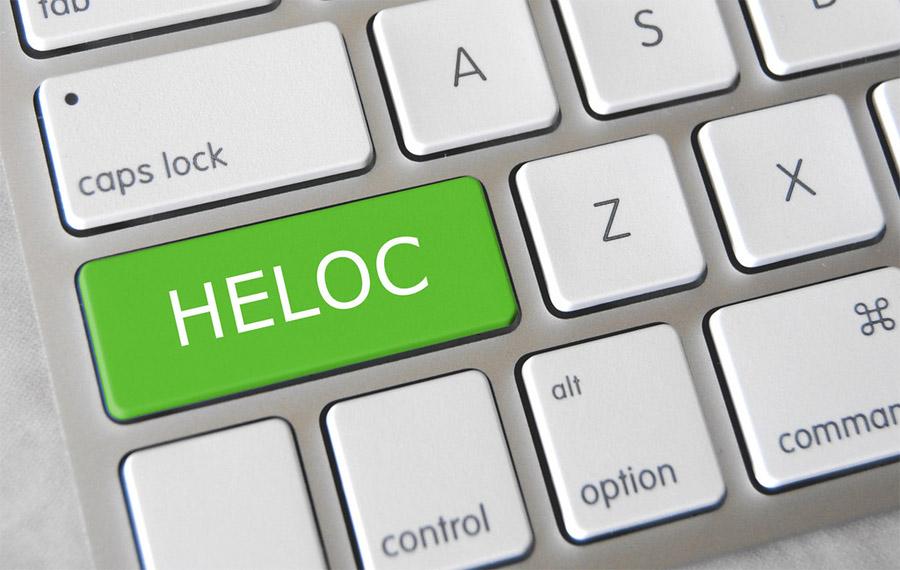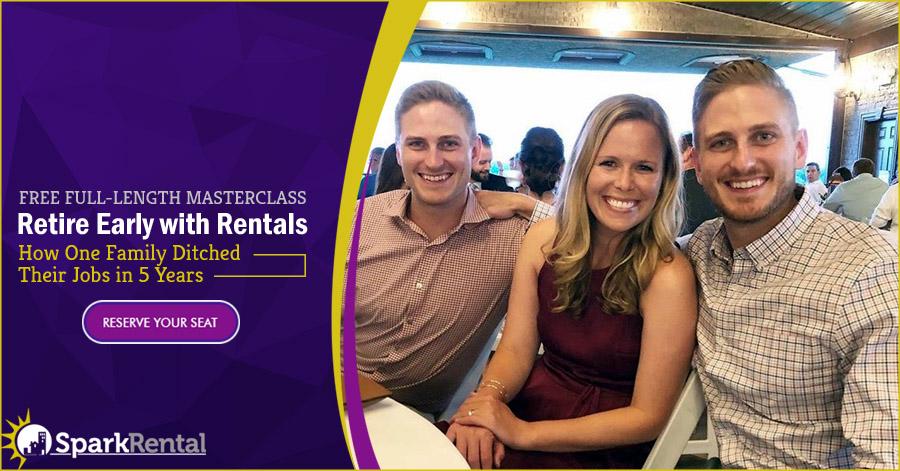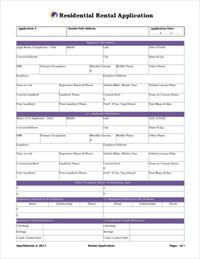
Have some rental properties with equity in them, and want to access it to help you grow your real estate portfolio?
One way to buy a rental property with no money down is to leverage equity in your other properties. That could mean a blanket loan against multiple properties, but then you risk losing two properties if you default on one loan. And it provides little flexibility for rapid repayment.
Another option for leveraging your existing equity? Taking out a home equity line of credit or HELOC against your home or another rental property.
Many investors aren’t even aware that lenders offer HELOCs against investment properties. But it remains a flexible option to help investors minimize their down payment on a rental property, pay the balance down quickly, rinse and repeat.
Benefits of Rental Investing with a HELOC
Already eyeing a property or two? Unless you’re independently wealthy and intend to buy your next property with cash, the next obvious step needs to be lining up a rental property loan to make the dream of property investing a reality.
The problem is that most rental property loans require at least 20-25% as a down payment. Which can add up quickly, when talking about assets costing hundreds of thousands of dollars.
While conventional mortgage lenders don’t allow any part of the down payment to be borrowed, most portfolio lenders such as Visio and LendingOne don’t impose the same limitation.
The beauty of using a HELOC to cover the down payment is that it’s a rotating line of credit. You can draw on it to cover a down payment, funnel all your real estate cash flow into paying the balance off, then do it all over again.
How HELOCs Work
While HELOCs offer tremendous flexibility in helping you grow your investment property portfolio, like so many things in life, the benefits come with real risks.
As a real estate investor, you know that being prepared for the unexpected is the difference in truly succeeding versus floundering as an investor in real estate. A home equity line of credit is a rotating line of credit secured against your home or rental property as collateral, and acts similarly to a credit card.
The borrower can access the line of credit whenever they choose over the course of the draw period. Most HELOCs are broken into two phases: the initial draw phase, when the borrower can withdraw money from the credit line, and the repayment phase, when the balance locks and the borrower must pay down the balance like a standard loan. Draw periods typically last 5-10 years, and the subsequent repayment phase typically lasts 10-20 years, although borrowers can and should pay the loan off faster if they can.
Like other lines of credit, HELOCs charge a variable interest rate based on market rates. It’s a very flexible and useful tool for investors, if used appropriately.
A truly fantastic aspect of a HELOC is that during your draw period, there are no limitations on repeatedly using the available credit. Say you withdraw a specific amount for a down payment on an investment property, and weeks later, you are in a position to pay off what you borrowed. As long as you continue to pay back the borrowed down payment, a replenished account means you can reuse the open credit for future down payments – over and over and over again. Needless to say, this creates an incredible potential to swiftly grow your portfolio.
Due to the risks involved, locating a lender willing to offer a HELOC for an investment property can be difficult. Try Figure to compare rates and availability for a HELOC on your investment property.
What it Takes to Access an Investment Property HELOC
A borrower requesting an investment property HELOC by a lender needs to get their financial ducks in a row. Due to the risks involved, lenders are naturally cautious when considering a rental property line of credit. There is a lot at stake from a lender’s perspective, so expect to be prepared in all ways possible. For starters, a borrower must have excellent credit scores, ample cash reserves, and have owned the investment property for at least one year.
The lender will likely want proof of solid tenants that make timely and consistent rent payments, and proof of a lease agreement. Not only will the current investment property scenario be carefully examined, but the borrower’s entire history as a real estate investor will be scrutinized before a lender grants a rental property line of credit.
The fact that an investment property HELOC allows repeated access to credit, makes it a stellar option for an investor intent on returning the credit availability to its original set point. To have such a flexible and open line of credit makes the investment property HELOC such a desirable financial tool for a rental property investor.
Benefits and Risks of a Rental Property HELOC
Why are lenders so reluctant to approve a HELOC for an investment property? Say the borrower loses his tenants at the same time he finds himself unemployed – a not altogether unrealistic scenario by any means. Life happens, and for a property investor that leaned on their home to grow their portfolio, things can get serious fast.
For a borrower’s first priority in such a situation will be to protect his own home, not their investment properties. If the borrower struggles long enough and ends up losing their home in foreclosure, assets sold to pay off debts will not necessarily leave enough money to settle the second or third loan. That means the HELOC may very well never be repaid, leaving the lender empty handed.
As a result, lenders build in protections equal to the risks. For one, an investment property HELOC comes with a higher interest rate than one written for a primary residence.
A HELOC on a primary residence could have a loan to value (LTV) ratio of 90%. Not so for a rental property, with stricter loan terms meaning the LTV may only reach from 75% to 80%. And one last big difference with an investment property HELOC is that the lender reserves the right to ask for two home appraisals, whereas one will suffice for a homeowner HELOC. Again, all these things are in place to protect the lender, due to the raised risks involved in granting a rental property HELOC.
While borrowers applying for a HELOC on their primary home can often get approved with FICO scores at or above 660, those looking for a HELOC drawn on an investment property should shoot for a score north of 700. Check with Figure to discuss the credit score needed to get approved for a HELOC on an investment property.
A huge plus in using an investment property HELOC is in the way an investor can draw the down payment for a desired property, and pay it back, leaving the available credit still intact for later use. As long as you continue to pay back the borrowed down payment, a replenished account means you can reuse the open credit for future down payments – over and over and over again. Needless to say, this leaves an incredible potential to swiftly grow your portfolio.
Alternative 1: Second Mortgage
A home equity loan, often referred to as a second mortgage, is another mortgage against your existing property or home. It goes in second lien position, meaning the lender gets paid back only after the first mortgage if you default, so lenders charge more for these higher-risk loans.
Unlike a HELOC, the money is received in one lump sum, making it a very popular way to cover one-off expenses like weddings, a trip of a lifetime and debt consolidation. And while a month-long trip to Australia with stops in Bali and Singapore sounds phenomenal, a smarter move would be investing that home equity money into an investment property.
And hey, if all goes as planned with your rental property investment journey, the hard work and focus in property investing may mean your dream trip may one day be realized!
When using a home equity loan to pay the down payment on another home, you are closer to starting a portfolio of rental property investments. The predictability of set monthly payments, and the security of a fixed rate, make this an attractive option for real estate investors.
(article continues below)
Alternative 2: Cash-Out Refinance
A cash out refinance is another way that an investor can pull equity out of an existing property, to further build their portfolio. This involves rewriting the existing loan for a higher amount, leaving the borrower to receive the excess funds at closing.
One significant benefit of going the route of a cash-out refinance is that it offers a lower interest rate when compared to a HELOC or a home equity loan. Again though, a cash-out refi is best dedicated to growing a portfolio, not hopping on a plane to go trekking through Switzerland or buying a boat – eyes on the investment property portfolio, guys!
Cash-out refinances are expensive however, despite loan officers’ reassurance that all fees and points are “rolled into the loan.” Even worse, they restart your amortization schedule and extend your debt horizon. (Read up on why you should build real estate equity and pay down debts rather than refinancing for new debts to understand exactly what those terms mean!)
Final Thoughts
Because your home or rental properties serve as the collateral for any mortgage written, always keep in the forefront of your mind that foreclosure is a real risk. Building a strong portfolio of investment properties can be exciting and rewarding, and when done well, can amass significant wealth for the property investor.
Be careful not to overleverage yourself and borrow too much money. Maximize your savings rate and use cash for down payments whenever possible, to invest with patience grow your portfolio at a sustainable pace.
Investing in real estate calls for bold moves and well-planned leaps, but also requires balance with prudent decision making. Above all, always run the numbers in a rental income calculator to make sure new properties will still generate positive cash flow – even with the added debt of a rental property HELOC.
Have you ever used an investment property HELOC? What did you use it for? How quickly were you able to pay down the balance?
More Unconventional Real Estate Investing Reads:
About the Author
Teresa Stack Hunter is a journalist turned content writer, with two decades of journalistic expertise. Teresa also ghostwrites for clients in the tech, travel and education sectors. She can be reached at http://awriteronceagain.com/.





























I’m trying to come up with some creative ways to invest into my first rental property. I have about 100k of equity in my home so I have recently been looking into a Heloc. My biggest question has been, which direction should i go with the equity; Home equity loan or home equity line of credit.
Hi Erica, it depends on how much flexibility you need. But in general, I really like the flexibility of a HELOC. You can pay it off and then use it all over again for another investment property.
Another option is a First Lien HELOC, where you finance the entire property with the HELOC. No need to start with a mortgage and then add a HELOC. This gives the ultimate in flexibility so you can either pay off your property faster or use the available line of credit to invest in other properties.
If used properly, all available cash can be paid on the First Lien HELOC (rather than having a Christmas Club account, an auto loan, and an escrow account for taxes and insurance, etc). This pays the loan down faster and saves interest which also speeds payoff.
Use a credit card for all (or most) purchases, and pay the credit card monthly out of the HELOC. This can save interest and accelerate payoff even faster.
However, one negative is that a First Lien HELOC on an investment property, like the regular HELOC or HELOAN, usually requires a higher loan to value than is required for a personal residence. Usually (65%-80% depending on the bank and your personal credit score).
I love this line: Maximize your savings rate and use cash for down payments whenever possible, to invest with patience grow your portfolio at a sustainable pace.
Glad to hear it Joseph!
Using a HELOC, I renovated my kitchen to increase my rental income, paying it off over two years. It was a risky move, but the increased cashflow exceeded my expectations, making it a smart decision in the end.
Glad to hear it Jefferson!
I didn’t know lenders issued HELOCs for rentals. good stuff
Thanks Layla!